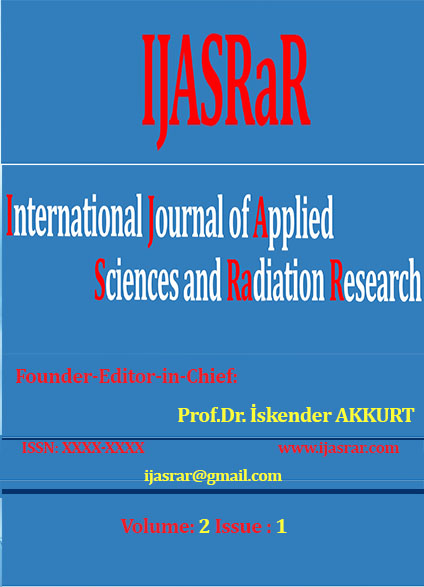AI and Machine Learning for Sustainable Energy: Predictive Modelling, Optimization and Socioeconomic Impact In The USA
DOI:
https://doi.org/10.22399/ijasrar.19Keywords:
Artificial Intelligence, Machine Learning, Sustainable Energy, Predictive Modeling, Energy Optimization, Renewable Energy, Smart Grid, Electric Vehicles, Energy Forecasting, Socioeconomic ImpactAbstract
This research explores how Machine Learning and AI can be used to enhance energy efficiency, forecast energy consumption trends, and optimize energy systems in the USA. This research used datasets comprising household energy usage, electric vehicle adoption trends, and smart grid analytics obtained from public sources, databases, and IoT sensor devices. This study applies advanced machine learning techniques such as deep learning, regression models, and ensemble learning to improve forecasting accuracy aimed at achieving efficient resource allocation. Additionally, this study investigates fault prediction in New Energy Vehicles (NEVs) and its implications for grid stability and energy demand management. The research also examines the socioeconomic impact of AI-driven energy policies and highlights their role in reducing carbon footprints, promoting energy equity, and fostering sustainable economic growth. Recurrent Neural Networks are applied to predict energy consumption trends and electric vehicle(EV) adoption rates by analyzing historical usage data. Convolutional Neural Networks and Autoencoders are used for anomaly detection in NEV battery performance and predictive maintenance. Deep Learning models also use real-time IoT sensor data to enhance the efficiency of energy distribution in smart grids. Linear Regression models are used to predict household and industrial energy demand based on factors such as weather, pricing, and socioeconomic variables. Linear Regression also predicts energy consumption trends in hospitals and factories. Random Forest and XGBoost are used in energy demand forecasting and energy consumption clustering. Performance evaluation metrics such as Mean Squared Error (MSE), Root Mean Squared Error (RMSE), and R-squared (R²) are utilized to assess model accuracy and effectiveness.
References
Ahmed, A., Jakir, T., Mir, M. N. H., Zeeshan, M. A. F., Hossain, A., Hoque Jui, A., & Hasan, M. S. (2025). Predicting Energy Consumption in Hospitals Using Machine Learning: A Data-Driven Approach to Energy Efficiency in the USA. Journal of Computer Science and Technology Studies, 7(1), 199-219. DOI: https://doi.org/10.32996/jcsts.2025.7.1.15
Barua, A., Karim, F., Islam, M. M., Das, N., Sumon, M. F. I., Rahman, A., & Khan, M. A. (2025). Optimizing Energy Consumption Patterns in Southern California: An AI-Driven Approach to Sustainable Resource Management. Journal of Ecohumanism, 4(1), 2920-2935. DOI: https://doi.org/10.62754/joe.v4i1.6087
Brynjolfsson, E., & McAfee, A. (2017). The Business of Artificial Intelligence: What It Can – and Cannot – Do for Your Organization. Harvard Business Review.
Choi, T. M., Wallace, S. W., & Wang, Y. (2021). Big data analytics in operations management. Production and Operations Management, 30(3), 534-547.
Chowdhury, M. S. R., Islam, M. S., Al Montaser, M. A., Rasel, M. A. B., Barua, A., Chouksey, A., & Chowdhury, B. R. (2024). Predictive Modeling of Household Energy Consumption in the USA: The Role of Machine Learning and Socioeconomic Factors. The American Journal of Engineering and Technology, 6(12), 99-118. DOI: https://doi.org/10.37547/tajet/Volume06Issue12-11
Danks, D., & London, A. J. (2017). Algorithmic bias in autonomous systems. Proceedings of the 26th International Joint Conference on Artificial Intelligence (IJCAI), 4691-4697. DOI: https://doi.org/10.24963/ijcai.2017/654
Hossain, M. S., Mohaimin, M. R., Alam, S., Rahman, M. A., Islam, M. R., Anonna, F. R., & Akter, R. (2025). AI-Powered Fault Prediction and Optimization in New Energy Vehicles (NEVs) for the US Market. Journal of Computer Science and Technology Studies, 7(1), 01-16. DOI: https://doi.org/10.32996/jcsts.2025.7.1.1
Hossain, S., Hasanuzzaman, M., Hossain, M., Amjad, M. H. H., Shovon, M. S. S., Hossain, M. S., & Rahman, M. K. (2025). Forecasting Energy Consumption Trends with Machine Learning Models for Improved Accuracy and Resource Management in the USA. Journal of Business and Management Studies, 7(1), 200-217. DOI: https://doi.org/10.32996/jbms.2025.7.1.15
Jobin, A., Ienca, M., & Vayena, E. (2019). The global landscape of AI ethics guidelines. Nature Machine Intelligence, 1(9), 389-399. DOI: https://doi.org/10.1038/s42256-019-0088-2
LeCun, Y., Bengio, Y., & Hinton, G. (2015). Deep learning. Nature, 521(7553), 436-444. DOI: https://doi.org/10.1038/nature14539
Schneider, T., Lan, S., Stuart, A., & Teixeira, J. (2021). Earth system modeling 2.0: A blueprint for models that learn from observations and targeted high-resolution simulations. Geophysical Research Letters, 48(7), e2020GL091656.
Shil, S. K., Chowdhury, M. S. R., Tannier, N. R., Tarafder, M. T. R., Akter, R., Gurung, N., & Sizan, M. M. H. (2024). Forecasting Electric Vehicle Adoption in the USA Using Machine Learning Models. Journal of Computer Science and Technology Studies, 6(5), 61-74. DOI: https://doi.org/10.32996/jcsts.2024.6.5.6
Sumon, M. F. I., Osiujjaman, M., Khan, M. A., Rahman, A., Uddin, M. K., Pant, L., & Debnath, P. (2024). Environmental and Socio-Economic Impact Assessment of Renewable Energy Using Machine Learning Models. Journal of Economics, Finance and Accounting Studies, 6(5), 112-122. DOI: https://doi.org/10.32996/jefas.2024.6.5.13
Varian, H. R. (2014). Big data: New tricks for econometrics. Journal of Economic Perspectives, 28(2), 3-28. DOI: https://doi.org/10.1257/jep.28.2.3
Waller, M. A., & Fawcett, S. E. (2013). Data science, predictive analytics, and big data: A revolution that will transform supply chain design and management. Journal of Business Logistics, 34(2), 77-84. DOI: https://doi.org/10.1111/jbl.12010
Downloads
Published
How to Cite
Issue
Section
License
Copyright (c) 2025 International Journal of Applied Sciences and Radiation Research

This work is licensed under a Creative Commons Attribution 4.0 International License.


